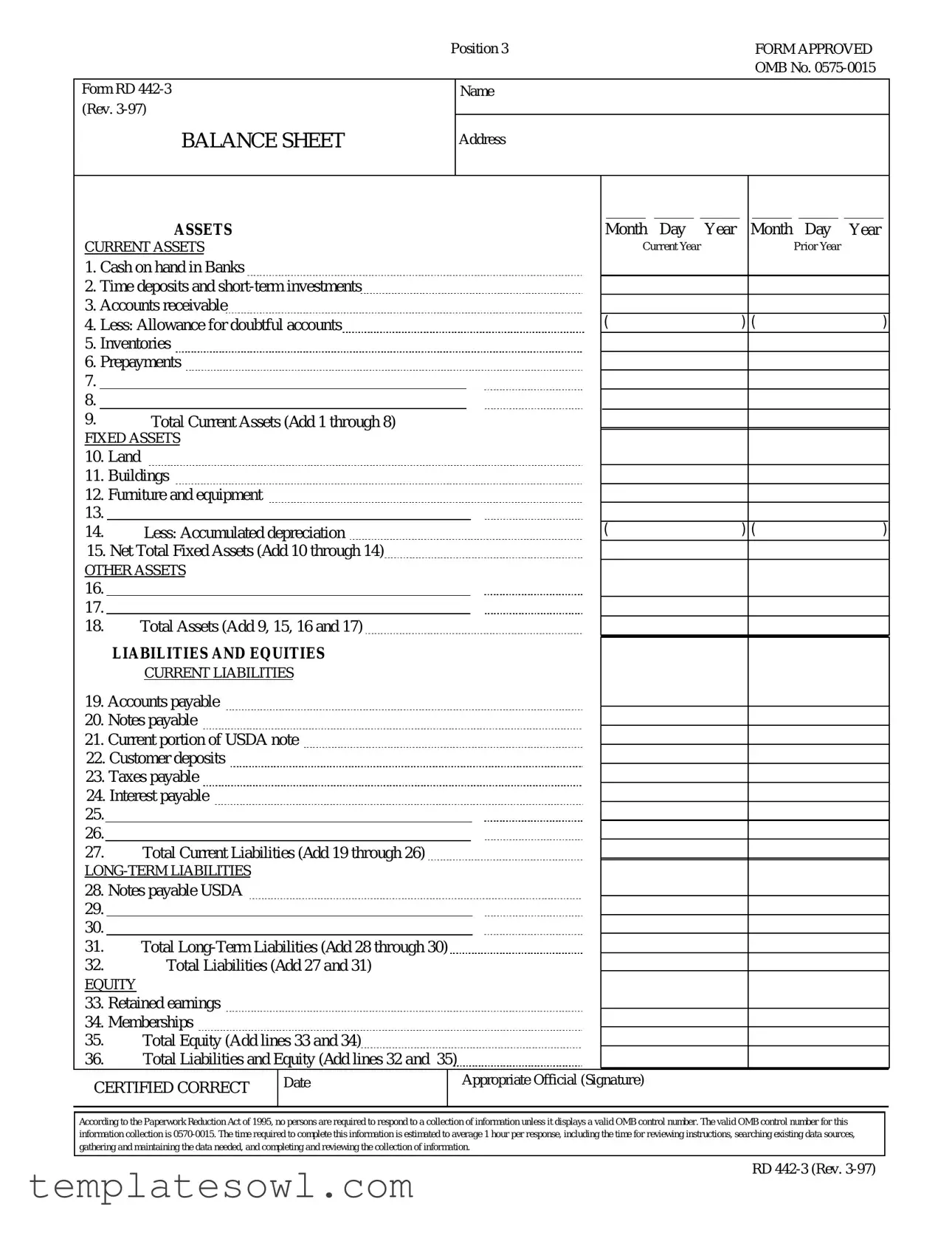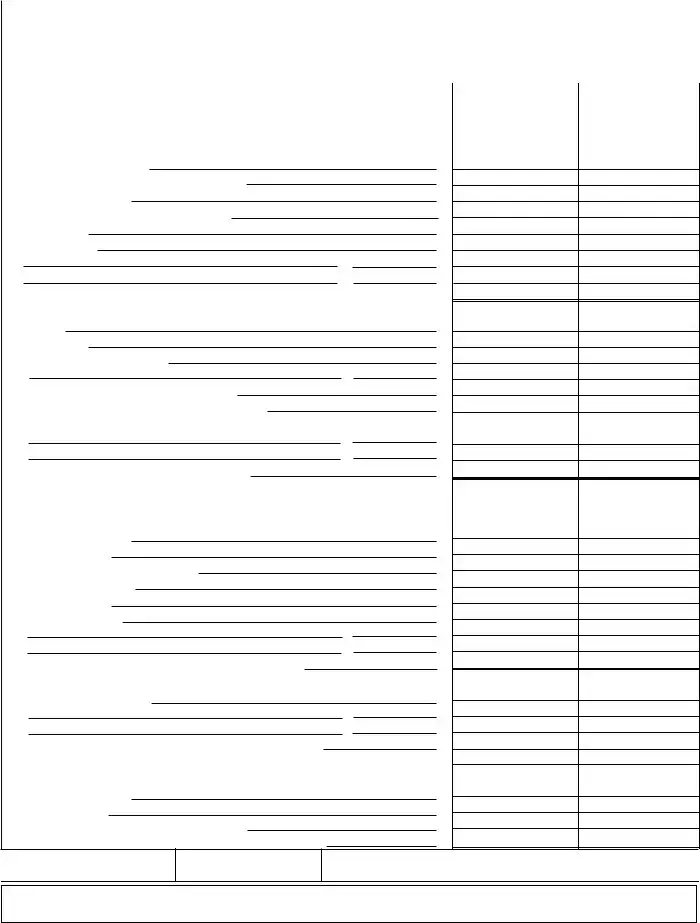What is the USDA RD 442-3 form used for?
The USDA RD 442-3 form is primarily utilized to provide a balance sheet for entities seeking financial assistance from the U.S. Department of Agriculture. It helps in assessing the financial position of the entity by detailing its assets, liabilities, and equity.
Who needs to fill out the USDA RD 442-3 form?
This form must be completed by individuals or organizations applying for USDA financial assistance, including businesses and cooperatives. It is essential for those entities that need to demonstrate their current financial condition to qualify for assistance programs.
What information is required on the USDA RD 442-3 form?
The form requires detailed information regarding current and fixed assets, liabilities, and equity. Applicants must list cash on hand, accounts receivable, inventories, accounts payable, taxes payable, retained earnings, and any outstanding loans. Each section must be accurately filled out to reflect true values.
How is the USDA RD 442-3 form structured?
The USDA RD 442-3 form is organized into several sections: Current Assets, Fixed Assets, Other Assets, Current Liabilities, Long-Term Liabilities, and Equity. Each section has specific line items for reporting detailed financial information, allowing for a comprehensive overview of the entity’s financial standing.
When should the USDA RD 442-3 form be submitted?
It is advisable to submit the USDA RD 442-3 form along with your application for financial assistance. Submission should occur before the deadlines specified by the USDA for the particular program you’re applying to, ensuring sufficient review time.
Is there a fee associated with submitting the USDA RD 442-3 form?
No, there are no fees required for submitting the USDA RD 442-3 form. However, applicants should check with their local USDA office for any additional requirements that may involve costs.
Can the USDA RD 442-3 form be filled out electronically?
Yes, applicants may fill out the USDA RD 442-3 form electronically, depending on the USDA's submission guidelines. It is recommended to check the USDA’s website or contact their office for the latest forms and submission methods.
What happens if I make a mistake on the USDA RD 442-3 form?
If a mistake is made on the USDA RD 442-3 form, it is crucial to correct it before submission. Clearly make any corrections and consider initialing the changes. If submitted incorrectly, it could delay the application process or result in disqualification.
How long does it take to complete the USDA RD 442-3 form?
Completing the USDA RD 442-3 form generally takes around one hour, as estimated by the USDA. This time includes reviewing instructions and gathering necessary documents, so applicants should allocate sufficient time to complete it accurately.
Where can I find the USDA RD 442-3 form?
The USDA RD 442-3 form can typically be found on the official USDA website under the forms section. Additionally, local USDA offices may provide physical copies or web access to the form for applicants.

